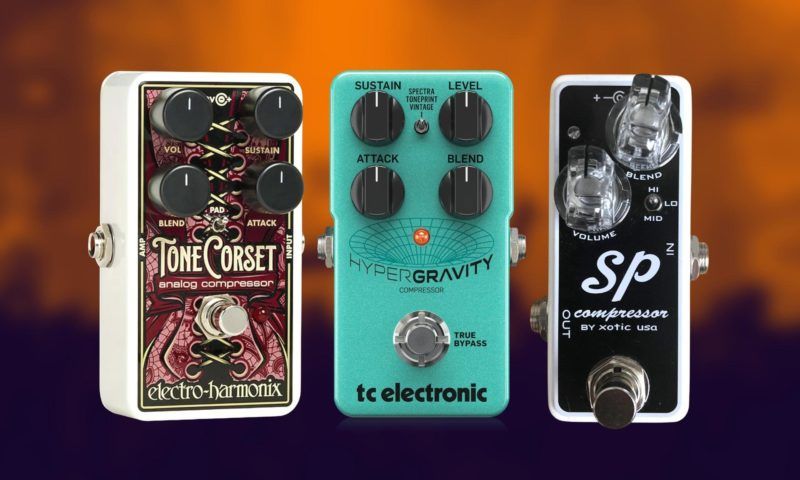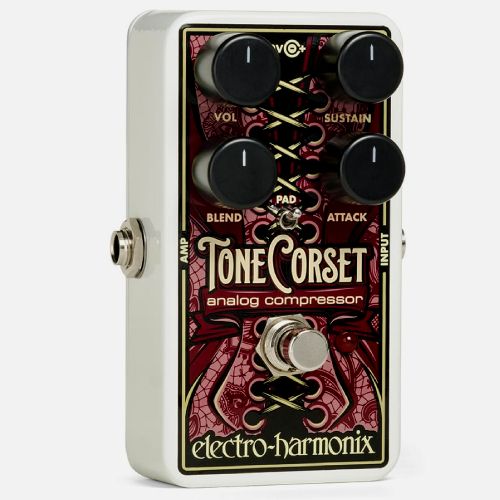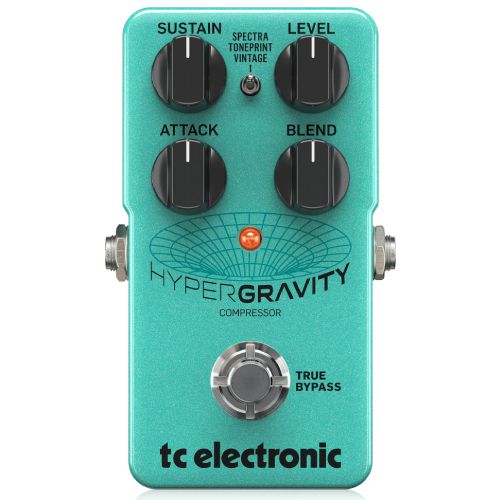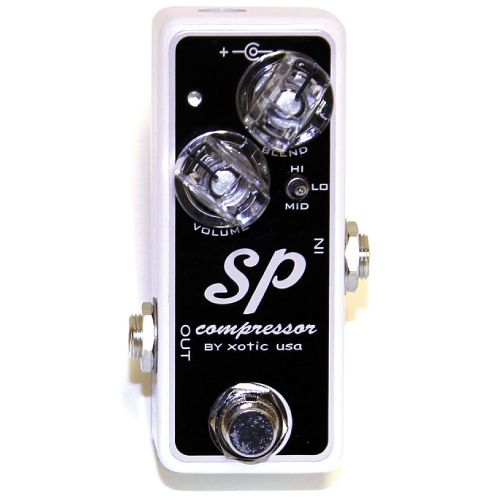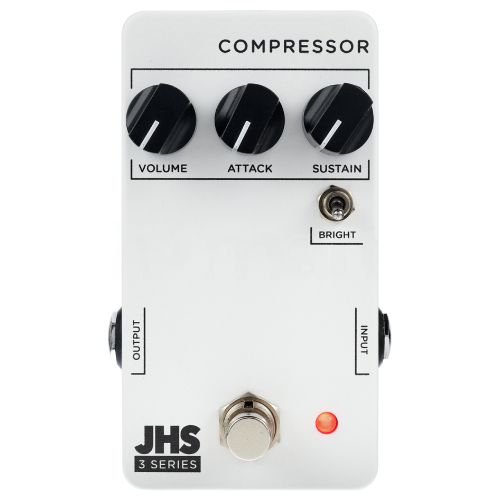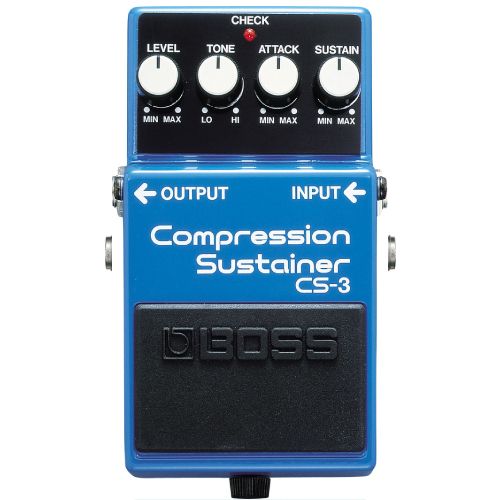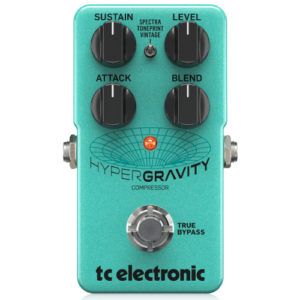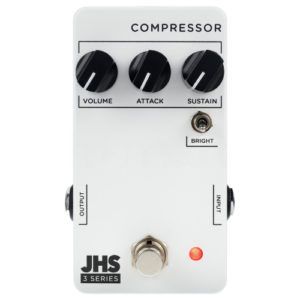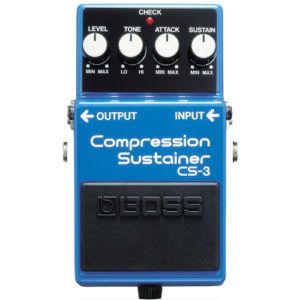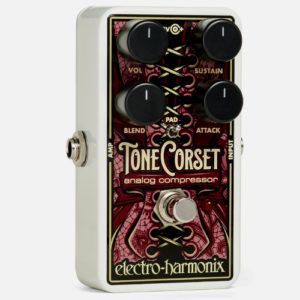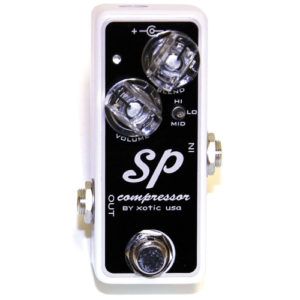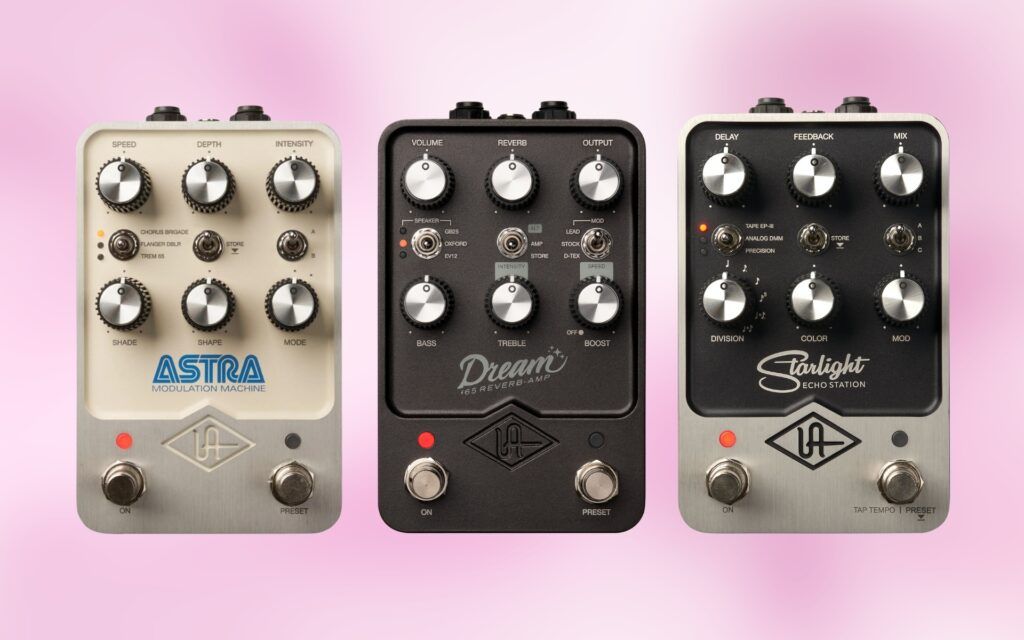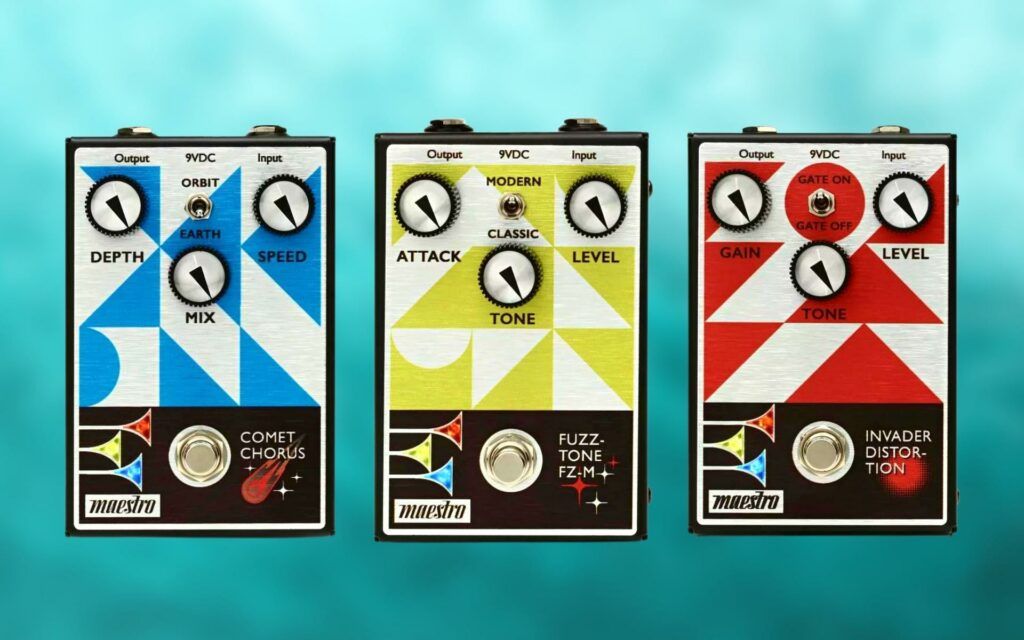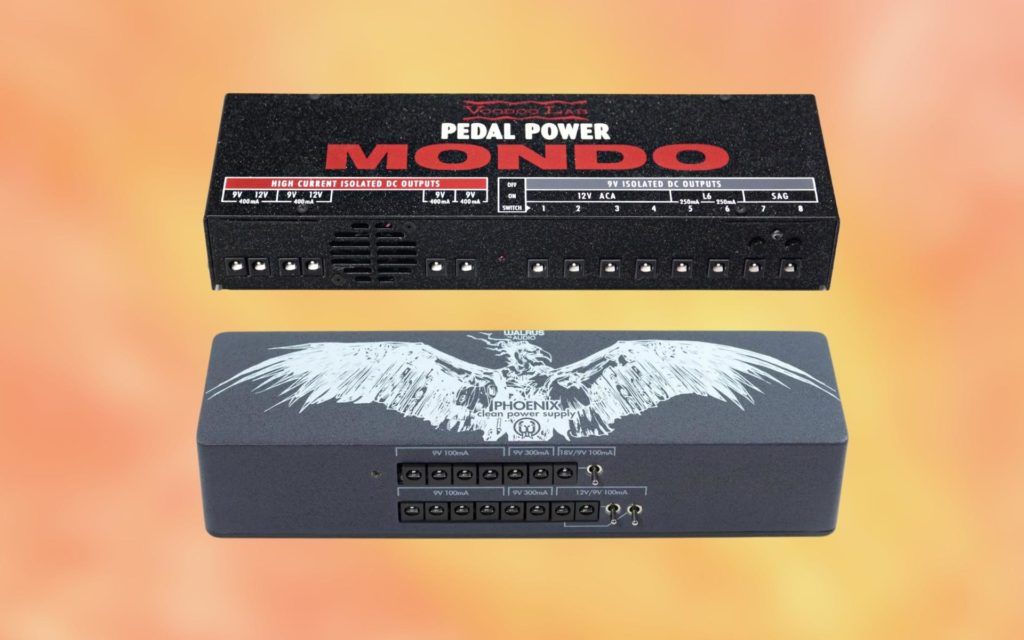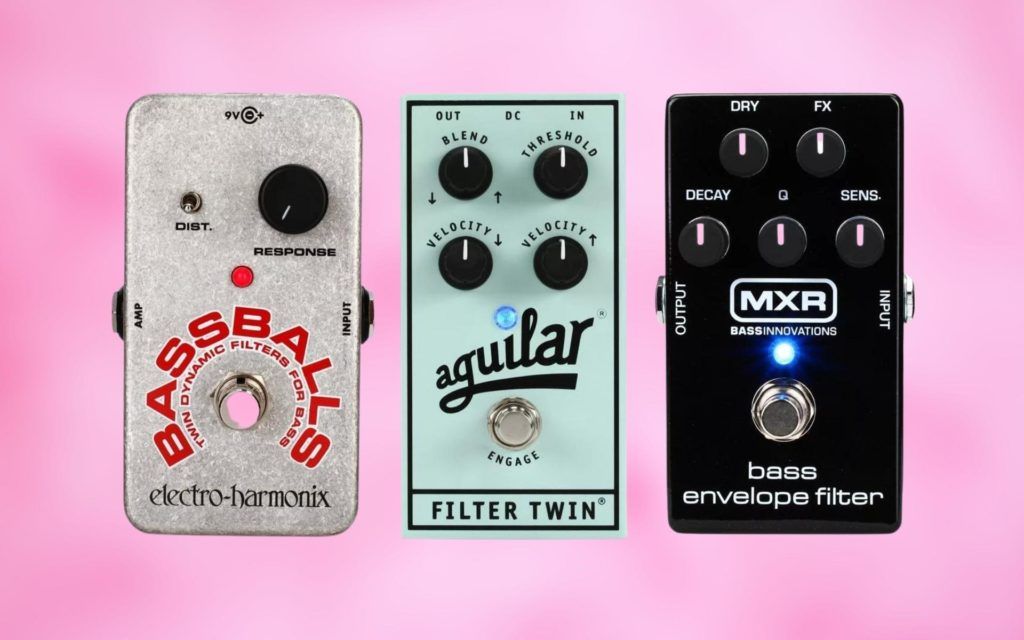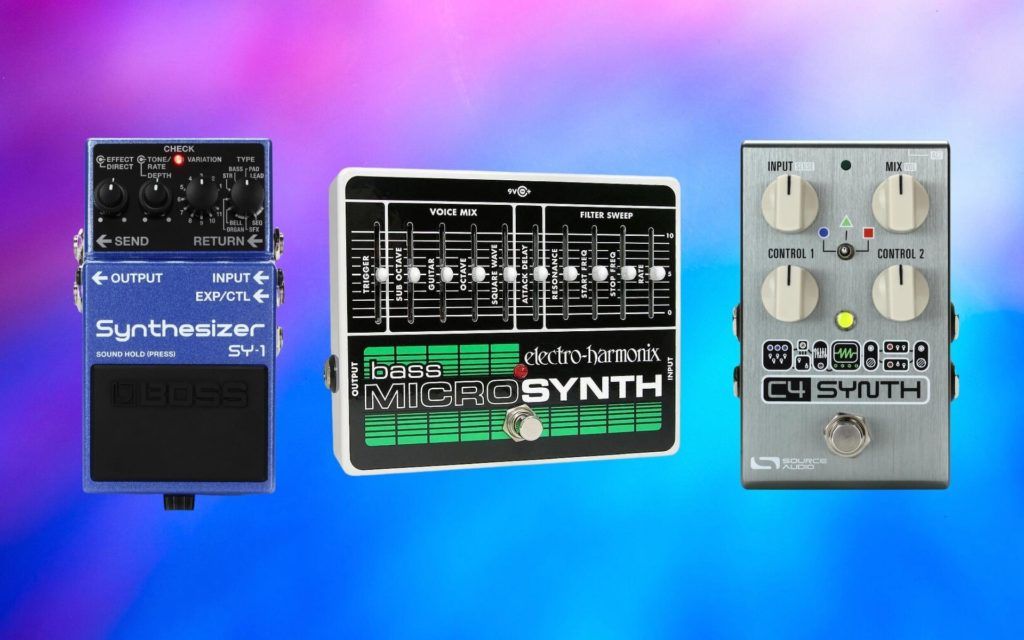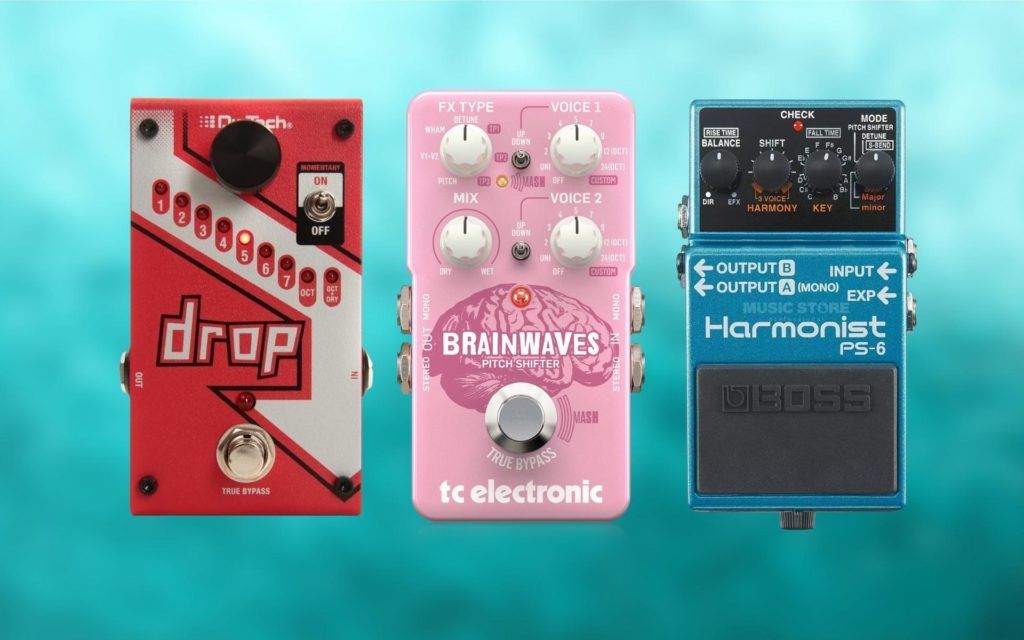We review products independently and our recommendations are genuine. If you purchase through links on our site, we may earn an affiliate commission. Learn More
Due to compression’s simplicity and understated nature, you don’t need to spend much money to get a high-quality pedal that can give you more control of your dynamics.
As musicians, we often overlook the importance of dynamic effects and focus more on the ones that transform our tone. In reality, adding a compressor pedal to your effects signal chain is a very wise decision.
Along with EQ and noise gate pedals, compressors are the unsung heroes of a guitarist’s pedalboard. They ensure that your dynamics remain consistent, and create a solid foundation for all of your other effects.
While there are many high-end, boutique compressor pedals out there, you don’t need to spend a small fortune to benefit from this effect. In this guide, we identify the best affordable compressor pedals to suit every style.
In a Rush’ Round-Up
How We Tested
There are many affordable compressor pedals available, so we devised a series of tests to help us identify the best options. Firstly, we checked the transparency of the pedal and monitored the signal for any noise issues or weak spots.
Then, we analyzed the impact of the compression on the dynamic range of a guitar. This was then combined with the usefulness of the pedal’s onboard controls, to give us an accurate overview of the compressor’s capabilities.
In the best guitar compressor pedal review section below, you can find a breakdown of the results from our tests.
Cheap Compressor Pedals Reviews
TC Electronic HyperGravity Compressor Pedal
TC Electronic HyperGravity Compressor Pedal Review
Some digital compression pedals can sound artificial and mechanical, but the HyperGravity by TC Electronic manages to reproduce a vintage, analog effect whilst also benefiting from modern technology.
The pedal comes with a three-way toggle switch, which is central to its versatility. If you enjoy analog-style compression, you can use the Vintage mode setting, which increases the warmth of the effect.
Alternatively, the Spectra preset will give the compressor a more modern, polished sound. This setting is very useful for keyboardists or guitarists who like to make their instrument sound as processed and refined as possible.
The switchable mode is designed to be used with TC Electronic’s popular TOnePrint library. You can hook the pedal up to your computer, laptop, or tablet and access an extensive selection of sounds.
TC Electronic has also installed both true bypass and buffered switching on the HyperGravity so that you can choose the ideal setting to suit your signal chain. These qualities make this one of the best compressor pedals in the affordable category.
Features
- Four onboard controls
- Three switchable compressor modes
- True bypass and buffered switching
Pros
- Warm, authentic vintage compression
- Combines digital technology with analog sound
- Roadworthy metal construction
Cons
- TonePrint mode is a little complicated
JHS 3 Series Compressor Pedal
JHS 3 Series Compressor Pedal Review
JHS is one of the most consistent effects manufacturers in the industry today. Its pedals often look deceptively simplistic, which is the case with the JHS Series 3 compressor.
Despite its minimalist design, this affordable compressor is a highly capable dynamic tool for guitarists. Its three controls cover all bases – and allow you to shape the sound and impact of the compression effect.
Located underneath the sustain knob is a two-way toggle switch, which is used to activate Bright mode. When this preset is selected, the higher frequencies are boosted, making them more prominent in the output.
This feature is very useful when you’re playing melodies and riffs that need to stand out. The injection of more treble frequencies makes each note more recognizable, without causing the signal to clip or distort.
Because this pedal is fully analog by design, it works perfectly with tube amplifiers and high-gain settings.
Features
- Three rotary controls
- Switch between normal and bright compression modes
- True bypass switching
Pros
- Great for applying heavy compression to a guitar signal
- Clean compression tone is useful for direct recordings
- Can also be used with keyboards or bass guitar
Cons
- Toggle switch is positioned a little too close to the Sustain control
Boss CS-3 Compression Sustainer Pedal
Boss CS-3 Compression Sustainer Pedal Review
There’s something special about the simplicity of a Boss effects pedal. Not only are they incredibly durable and easy to operate, but they also produce a range of complex and high-quality effects and tones.
The Boss CS-3 is one of several compression pedals manufactured by Boss, but in my opinion, it’s their best. Each of the four controls is vital to the shaping of the compression and dynamic limiting.
Furthermore, this pedal also allows you to adjust the tonal aspects of your instrument. The Level, Attack, and Sustain parameters are focused on altering the dynamic properties of the compression, while the Tone knob impacts the coloration.
One of the standout capabilities of this pedal is how much sustain it can add to every note that you play, particularly in the upper registers of the guitar.
If you often find that your solos lack dynamic power and sustain, this pedal will provide enough of a boost to make the notes last for considerably longer.
Features
- Four onboard rotary knobs
- EQ and compression in one pedal
- True bypass switching
Pros
- Classic, robust Boss design
- Produces minimal self-noise
- Ideal for boosting sustain of guitar notes
Cons
- Requires some figuring out due to extensive controls
Electro-Harmonix Tone Corset Analog Compressor Pedal
Electro-Harmonix Tone Corset Analog Compressor Pedal Review
You can always count on Electro-Harmonix to produce a unique pedal. This innovative brand is renowned for pushing the boundaries of conventional effects, as is evidenced by the excellent Tone Corset compressor pedal.
Rather than opting for a digital design, EXH has chosen to stick with tried and tested analog circuitry when designing this pedal. The sound it produces is therefore full of character and doesn’t sound forced at all.
This pedal performs best when it is placed towards the beginning of your signal path, simply because it sets the dynamics up for all of the pedals that follow it.
The Attack and Sustain controls are used to adjust the dynamic aspects of the compressor, then once you’ve reached the optimal settings, you can use the Blend control to adjust the amount of wet and dry signal in the output.
Perhaps the most impressive feature of the Tone Corset Analog Compressor is the onboard pad. Similar to the pads found on condenser mics, this can be used to tailor the frequency prominence of the effect to suit your guitar and amplifier.
Features
- Switchable pad control
- Four onboard parameters
- True bypass switching
Pros
- Pad is useful for taming high-gain tones
- Very natural compression sound
- Robust chassis
Cons
- May sound a little too bright for some styles
Xotic SP Compressor Mini
Xotic SP Compressor Mini Review
The word transparency gets used a lot when we talk about effects pedals, but it’s particularly important when discussing compressors. If a compressor alters the tone or frequency output of a guitar too much, this is usually not a good thing.
The Xotic SP Compressor Mini is one of the best mini compressor pedals on the market. It doesn’t just limit the dynamic range of the signal – it also preserves the dry sound so that the rest of your effects can flourish.
Also, this pedal requires no prior knowledge of compressors to use. Xotic has proven that you don’t need an array of controls and parameters to deliver effective compression.
The Volume and Blend controls interact with the guitar signal differently depending on which of the three modes are selected on the toggle switch. If you need more bass, you can choose the Lo setting, while the Mid and Hi presets boost the relevant frequencies.
Features
- Based on the highly respected Ross compression circuit
- Two control layout
- Hi, Lo and Mid toggle switch
Pros
- Highly transparent compression tone
- Small, compact size fits on any pedalboard
- Maintains signal integrity at all times
Cons
- Lacks an attack or sustain control
Cheap Compressor Pedals Buyer's Guide
Some musicians often dismiss cheaper effects pedals and automatically assume that they sound worse than high-end, boutique options. In some cases, that is probably true, but with compressor pedals, it’s not always the case.
Compression isn’t like the other more transformative effects commonly used by guitarists. It affects the sound subtly, but its role on a pedalboard is equally as important as any other effect.
Often, the only differences between a high-end, expensive compressor and the cheaper ones we’ve covered in this guide are the quality of their housing and controls, but as long as you use them responsibly, this shouldn’t matter.
Below, we’ll outline all the essential things to look out for when deciding which affordable compressors you should choose.
Things to Consider When Buying Compressor Pedals
Onboard parameters
Some compressor pedals have minimalist control layouts, while others allow you to adjust parameters such as Attack, Sustain, Sensitivity, and Ratio. The more controls you work with, the more versatile the compressor will be.
Analog and digital compression
Digital compressor pedals are generally capable of producing more sounds, but analog models offer a warmer, vintage style of compression that many guitarists prefer.
Signal chain order
A compressor pedal should slot into your existing signal chain and enhance the performance of every other effect. Some compressors are better suited to extensive signal chains, while some may work best when used with a limited number of other pedals.
True bypass or buffered pedals
Most affordable compressor pedals have true bypass switching installed, which is excellent for keeping your signal at optimal strength. If you use many pedals, looking for a buffered model may be a good idea, as these are better suited to long cable runs.
How To Select an Affordable Compressor for Your Signal Chain
Compression is usually something that guitarists, bassists, or other musicians learn about long after they start to play their instrument. That’s because the way compression works are less noticeable than many other effects.
Adding a compressor pedal to the front of your signal chain can improve every aspect of your amplified sound, from the tone to the dynamics.
To identify the best cheap compressor pedal, you first need to figure out whether you would rather have a simple device that leaves little room for customization or a more complex offering that can be altered more precisely.
Many people are under the false impression that compression is a complicated effect to use and understand.
Indeed, if you get into the finer details of a compressor pedal, it can seem like a lot of science is involved in using the effect.
All you need to look out for is that the pedal has the necessary controls for limiting the dynamic range of your instrument’s output and that it preserves the clean tone that goes into the pedal.
How To Use a Compressor Most Effectively
A compressor pedal is a tool that any musician or vocalist can use to improve the sound of their instrument or voice. It targets the output’s dynamic range rather than the tonal aspects.
Adding a compressor to your signal chain can prevent a considerable gulf in volume between the loudest and quietest notes you play on your instrument.
To use the compressor pedal, you must know what the various controls do. The most straightforward layout you’ll find has a volume control, an attack control, and a compression control.
High-end compressors may have individual controls for specific aspects of the effect, such as ratio, threshold, and curve. Still, these are less common on the affordable pedals discussed in this guide.
I recommend using minimal compression first so you don’t make your guitar sound overly limited. Once you find the perfect amount of compression that tightens up your dynamics without stifling them, you can experiment with more extreme amounts of compression.
True Bypass vs. Buffered Compressor Pedals
Another key decision you’ll need to make is whether you should opt for a true bypass compressor pedal or one with a buffer installed. There are various arguments for and against both of these varieties.
True bypass compressors guarantee that your signal strength won’t be weakened when the compressor is not in use. A buffer boosts the signal strength so that it is maintained throughout the chain.
Some guitarists prefer to use buffered pedals towards the start of their chain, resulting in a stronger signal reaching the pedals that come towards the end.
Cheap Compressor Pedals FAQs
What Is a Compressor Pedal’s Ratio Control For?
Many compressor pedals and VST plugins include a ratio control. This is used to determine the amount of gain reduced by the compressor when the signal exceeds the predetermined threshold level.
If you set the threshold of the compressor to 2:1, this means that the level of the output will be increased by 1 dB for every 2 dB that the signal exceeds the threshold. A ratio of 4:1, on the other hand, would lead to a 1 dB increase for every 4 dB that the signal rises above the threshold.
When Should I Use a Compression Pedal?
Compression is an effect you can use at all times because it doesn’t have an overpowering impact on how your instrument sounds. Many guitarists choose to leave their compressor pedal on constantly to keep their dynamic range consistent.
Alternatively, you could use the compressor only when you feel like you need tighter dynamics. This may be when you’re playing a particular riff or using other pedals that can sound a little wild without compression.
Can You Use a Compressor Pedal With Distortion?
Using a compressor pedal with distortion, or any gain-based pedal for that matter is a great idea. Doing this can beef up your guitar tone and ensure you cut through the mix when required.

